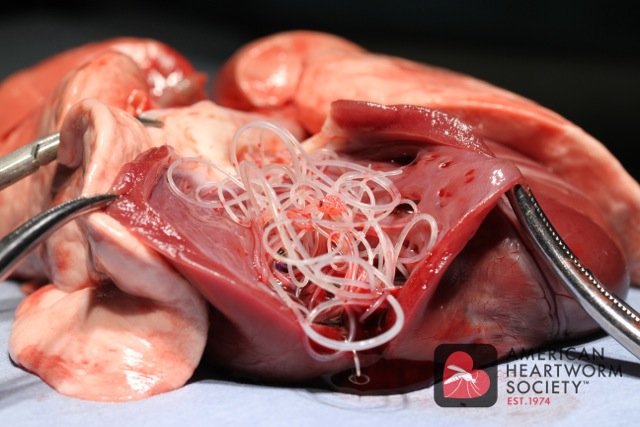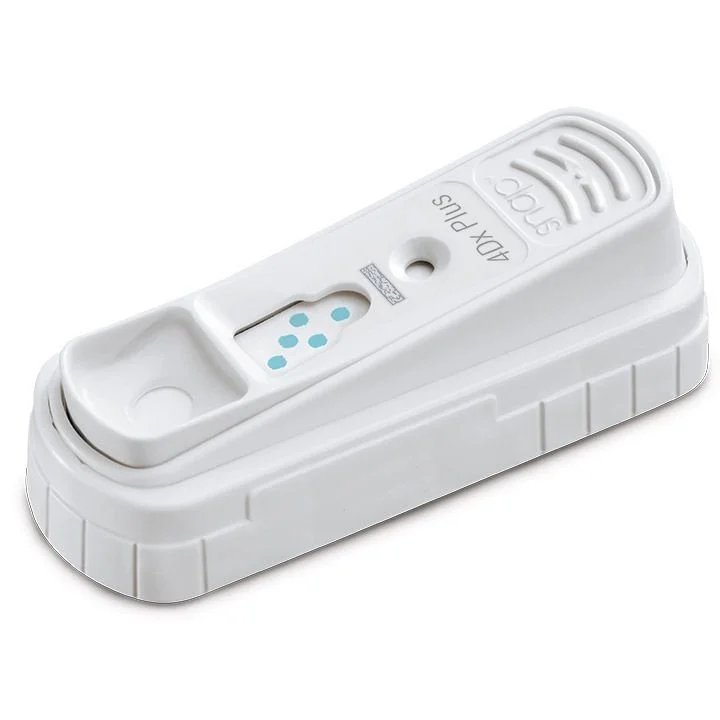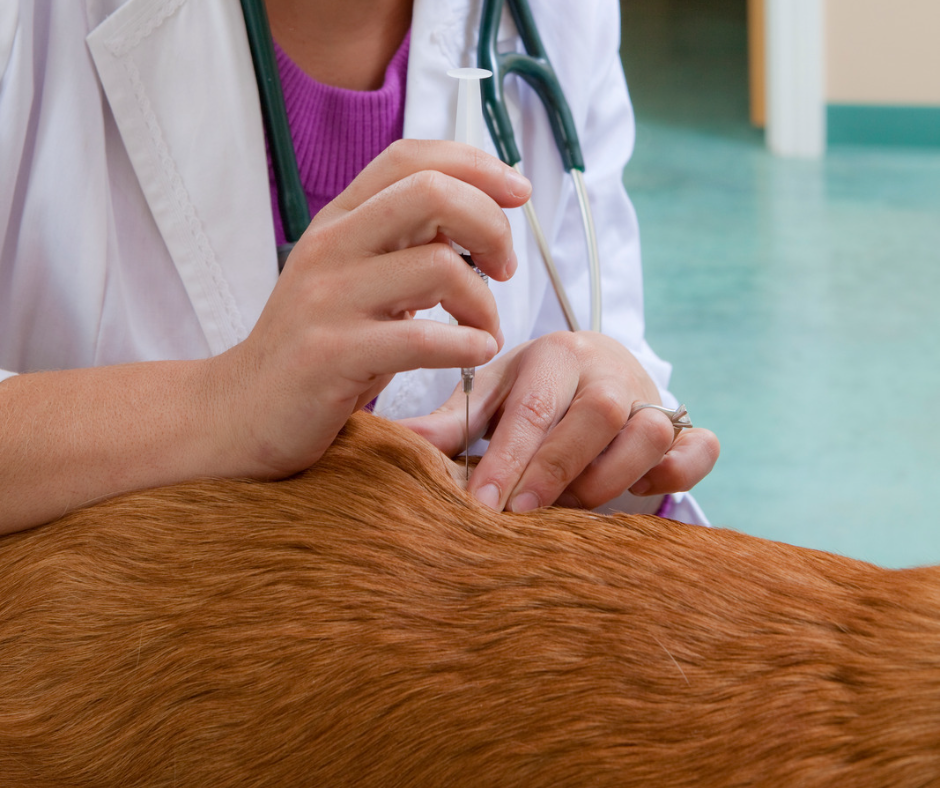Heartworm Disease
What is heartworm disease?
Heartworm disease is a severe and potentially lethal illness that affects pets in various parts of the world, including the United States. The disease is caused by foot-long worms in the heart, lungs, and related blood vessels, leading to severe lung disease, heart failure, and harm to other organs. While dogs and cats are both susceptible to heartworm disease, it is crucial to note that other mammal species, including wolves, coyotes, foxes, sea lions, and in rare instances, humans, can also harbor heartworms. Because wild species such as foxes and coyotes live near many urban areas, they are regarded as essential carriers of the disease.
In dogs, heartworms mature into adults, mate, and reproduce, causing lasting harm to the heart, lungs, and arteries. If left untreated, the number of heartworms in a dog's body can grow, and they can harbor hundreds of worms. Thus, heartworm prevention in dogs is the most effective solution, and treatment should be administered as early as possible if needed. Ask your vet what heartworm prevention is best for your dog.
Unlike dogs, cats are atypical heartworm hosts, and most worms do not survive to the adult stage. Cats with adult heartworms usually have one to three worms; many affected cats may have no adult worms. However, even immature worms can cause severe harm in the form of heartworm-associated respiratory disease (HARD), which often goes undiagnosed. Moreover, the medication used to treat heartworm infections in dogs is unsuitable for cats. Thus, prevention is the only means of safeguarding cats from the consequences of heartworm disease. Read more about heartworm disease in cats in this blog.
How are heartworms transmitted?
The mosquito plays a crucial role in the life cycle of heartworms. Female heartworms residing in an infected animal release microfilaria, which are tiny worms circulating in the bloodstream. When a mosquito feeds on the infected animal, it picks up these microfilariae, which then mature into infective larvae over 10 to 14 days. Subsequently, when the infected mosquito bites another animal, such as a cat, dog, or other susceptible wild animals, they leave infective larvae on the animal’s skin, which then enter the new host through the mosquito’s bite wound. After entering the new host, it takes about 6 months for the larvae to mature into sexually active adult heartworms. These worms can live up to 5 to 7 years in dogs and 2 to 3 years in cats, increasing the number of worms with each mosquito season.
Signs of heartworm infection
In dogs:
In the initial stages of heartworm disease, many dogs may not display any symptoms or only show mild ones. However, symptoms are more likely to appear as the infection progresses, especially in active dogs, those heavily infested with heartworms, or those with other health issues.
Common signs of heartworm disease in dogs include a persistent mild cough, reluctance to exercise, fatigue after moderate activity, reduced appetite, and weight loss. As the disease advances, dogs may experience heart failure, leading to a distended belly caused by an accumulation of fluid in the abdomen. Dogs with a high number of heartworms may experience sudden blockages of blood flow in the heart, resulting in a life-threatening type of cardiovascular collapse known as caval syndrome. This condition is characterized by a sudden onset of labored breathing, pale gums, and dark, bloody, or coffee-colored urine. Without prompt surgical removal of the heartworm blockage, few dogs survive.
In cats:
Signs of heartworm disease in cats can be very subtle or very dramatic. They may include coughing, asthma-like attacks, periodic vomiting, lack of appetite, or weight loss. An affected cat may experience difficulty walking, faint, have seizures, or suffer from fluid accumulation in the abdomen. Unfortunately, the first sign in some cases is the sudden collapse of the cat or death.
What is my pet’s risk of infection?
There are many factors to consider regarding risk, even if heartworms are not prevalent in your area. It is possible that your community may have a higher incidence of heartworm disease than you realize, or you may take your pet to an area where heartworms are more common. Furthermore, heartworm disease spreads to new regions of the country every year. Stray and neglected dogs, as well as certain wildlife such as coyotes, wolves, and foxes, can carry heartworms, and infected mosquitoes can be carried by the wind or transported by relocating infected pets to previously uninfected areas.
Heartworm disease has been reported in all 50 states, and risk factors are difficult to predict. Many variables, including climate variations and the presence of wildlife carriers, can cause infection rates to vary significantly from year to year, even within communities. Because infected mosquitoes can enter homes, both indoor and outdoor pets are at risk.
Due to the unpredictable nature of heartworm disease, the American Heartworm Society recommends that pet owners “Think 12”: get pets tested for heartworm every 12 months and provide them with heartworm prevention medication all 12 months of the year.
What should I know about testing?
Heartworm disease is a severe and progressive illness, and the chances of a pet’s recovery increase significantly if detected early. Unfortunately, there are few, if any, early signs of infection in dogs and cats. Therefore, having your pet tested for heartworms by a veterinarian is crucial. The heartworm test only requires a small blood sample from your pet, and it works by identifying the presence of heartworm proteins. Some veterinarians may conduct the test in their clinics, while others may send the samples to a diagnostic laboratory. In either case, the test results are usually available quickly. If your pet tests positive, further diagnostic tests may be necessary.
When should my pet be tested?
The testing procedures and recommended timing for heartworm testing differ for dogs and cats.
Dogs: All dogs should be tested annually for heartworm infection, typically during a routine preventive care visit.
Puppies under 7 months old can start on heartworm prevention without a test but should be tested 6 months after the initial visit and then annually.
Adult dogs over 7 months old who have not previously been on heartworm prevention need to be tested before starting prevention and then retested 6 and 12 months later and annually after that.
Even dogs on year-round prevention need to be tested annually to ensure their prevention is working.
Cats: Heartworm infection is harder to detect in cats than in dogs, as cats are less likely to have adult heartworms. The preferred cat screening method includes both an antigen and an antibody test; x-ray or ultrasound may also be used. Cats should be tested before starting prevention and retested as the veterinarian approves.
What happens if my pet tests positive?
Dogs: Finding out that your dog has heartworms can be distressing, but the good news is that treatment is usually successful. The aim is first to stabilize your dog’s condition and then eradicate all adult and immature heartworms while minimizing any side effects of treatment.
If your dog tests positive for heartworm, here’s what you can expect:
Confirming the diagnosis. When a dog tests positive on an antigen test, the diagnosis must be verified with an additional and different test to ensure that treatment is necessary before starting an expensive and complex treatment regimen.
Limiting exercise. Although restricting physical activities can be challenging, limiting your dog’s normal activities is critical as soon as the diagnosis is confirmed. The rate at which heartworms cause damage to the heart and lungs is increased by physical exertion—the more severe the symptoms, the less activity your dog should have.
Stabilizing your dog’s disease. Appropriate therapy may be necessary to stabilize your dog’s condition before actual heartworm treatment can begin. This process can take several months in severe cases of heartworm disease or when a dog has another serious condition.
Administering treatment. Once your dog is stable and ready for heartworm treatment, your veterinarian will devise a treatment protocol that will likely involve several steps. Dogs with mild or no signs of heartworm disease have a high success rate with treatment. Severe disease can also be treated, but complications are more likely. Dogs with many worms may have few or no symptoms early in the course of the disease, so the severity of heartworm disease does not always correlate with the severity of symptoms.
Testing (and prevention) for success. About nine months after treatment, your veterinarian will perform a heartworm test to ensure that all heartworms have been eliminated. To prevent your dog from contracting heartworm disease again, you should administer heartworm prevention year-round for the rest of your dog’s life.
Cats: Cats can contract heartworms like dogs, but the disease in cats differs in several ways, including diagnosis and management. Although cats are not the preferred host for heartworms, infections can cause respiratory system damage, affect the immune system, and lead to symptoms like coughing, wheezing, and breathing difficulties. Heartworms can even migrate to other body parts, such as the brain, eyes, and spinal cord, resulting in severe complications like blood clots and lung inflammation when the adult worms die.
If your cat tests positive for heartworm, the following steps should be taken:
Diagnosis. Cats usually have fewer than six heartworms, but even one or two worms can make them very sick. Diagnosis may involve a physical exam, X-ray, blood count, various blood tests, and an ultrasound.
Treatment. Unfortunately, there is no approved drug therapy for heartworm infections in cats, and the drug used to treat dogs is not safe for cats. However, good veterinary care can still help stabilize your cat and determine a long-term management plan.
Monitoring. Spontaneous clearing of heartworms may occur in some cases, but the damage they cause may be permanent. Regular chest X-rays every six to twelve months may be recommended, and small doses of prednisolone may be administered to reduce inflammation.
Veterinary care. Severe cases may require hospitalization and therapy, including intravenous fluids, drugs to treat lung and heart symptoms, antibiotics, and general nursing care. Surgical removal of heartworms may also be possible in some cases.
Prevention. Heartworm-positive cats are susceptible to new infections, and both outdoor and indoor cats are at risk. Monthly heartworm preventives, available in pill or topical form, are essential to keep new infections from developing if an infected mosquito bites your cat again.
Why do I need a prescription for my pet’s heartworm prevention?
Heartworm preventives are only to be used under the guidance of a licensed veterinarian, as stated by the U.S. Food and Drug Administration (FDA). This means heartworm preventives must be obtained from a veterinarian or a pet pharmacy with a prescription. Before prescribing a heartworm preventive, the veterinarian typically performs a heartworm test to ensure your pet does not have adult heartworms. This is important because administering preventives to pets with adult heartworms can lead to rare but severe and potentially fatal reactions. However, very young puppies or kittens do not need to be tested before starting preventive, as it takes about 6 months for heartworms to develop into adulthood. Your veterinarian will prescribe a prevention medication if the heartworm test is negative.
For more detailed information about Heartworms, check out The American Heartworm Society.







